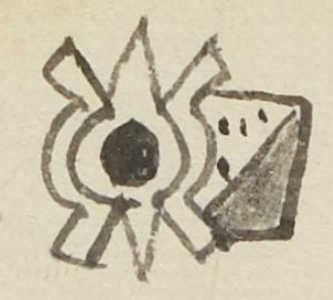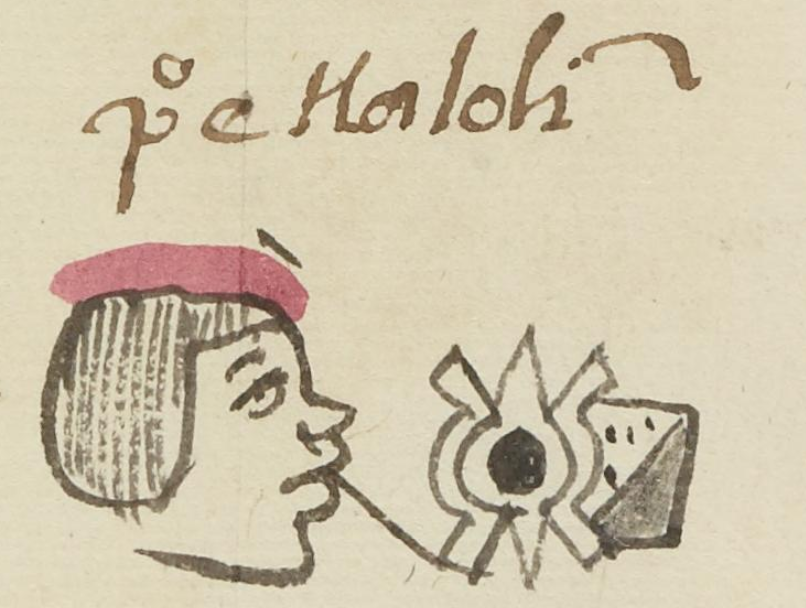Tlalolin (MH640r)
This black-line drawing of the compound glyph stands for the personal name Tlalolin ("Earthquake"). It is attested here as a man’s name. The glyph shows a square piece of land with markings that may suggest that it is a cultivated, agricultural parcel (tlalli). Next to it is the sign for movement (olin). See comparisons below.
Stephanie Wood
Often, the sign for movement in this manuscript will have a black rubber (olli) ball at its center, a phonetic complement for olin (movement). But sometimes the center is a starry eye.
Stephanie Wood
tlalolī
Tlalolin
Stephanie Wood
1560
Jeff Haskett-Wood
lands, parcels, tierras, agricultura, tenencia de la tierra, terrenos, sementeras, hule, rubber, movement, movimiento

tlalolin, earthquake, https://nahuatl.wired-humanities.org/content/tlalolin
tlal(li), land, https://nahuatl.wired-humanities.org/content/tlalli
ol(li), rubber, https://nahuatl.wired-humanities.org/content/olli
ol(in), movement, https://nahuatl.wired-humanities.org/content/olin
La Tierra Tembló
Stephanie Wood
Matrícula de Huexotzinco, folio 640r, World Digital Library, https://www.loc.gov/resource/gdcwdl.wdl_15282/?sp=362&st=image.
This manuscript is hosted by the Library of Congress and the World Digital Library; used here with the Creative Commons, “Attribution-NonCommercial-ShareAlike 3.0 License” (CC-BY-NC-SAq 3.0).










